Japanese polychrome Satsuma bowl base
Ø 9.5 cm top edge Ø 18.5 cm H 8 cm
€ 2.200,00
Prijs incl. 6% BTW & Verzendingskosten
Meer informatie
Satsuma ware (薩摩焼, Satsuma-yaki) is a type of Japanese pottery that originated from Satsuma Province in southern Kyūshū. Today, it can be divided into two different categories: There are Shiro-Satsuma (白薩摩) and Kuro-Satsuma (黒薩摩). Shiro-Satsuma is also known as Shiromon (白もん). Kuro-Satsuma is also known as Kuromon (黒もん). By adapting their gilded polychromatic overglaze designs to appeal to the tastes of Western consumers, manufacturers of the latter made Satsuma wares one of the most recognized and profitable exports of the Meiji period. In 1873 etsuke (絵付け) workshops specialized in painting blank glazed stoneware items from Satsuma originated in Kobe and Yokohama. Popular designs were mille-fleur (thousand flowers) and complex patterns. Commonly used colors were iron red, purple, blue, turquoise, black and yellow. Most high-quality export ‘Satsuma’ is easily identified by its finely crackled glaze and the fact that its yellowish pottery body does not “tink” when tapped. Look closely at the piece. You should be able to see a difference between the background (usually cream in color). It will have a shine and usually a delicate crackle effect. You will be able to see the foreground painting applied on top of the glaze, creating a softer, more matte finish. You can sometimes feel it when you gently run your fingers over the decoration.00 € Shown is a round deep bowl in kuro-Satsuma pottery. On a round low foot we see a spreading wall ending in a gilded round edge. Above the base is a band-shaped frieze of various flowers painted in bright colors with rich gilding. The exterior of the corpus is hand-painted on a slightly crackled creamy base color overglaze with a polychrome decor of mille-fleur and blossoms and a swamp with reed stems with the Fuji mountain in the background. Horror vacuum is avoided by sufficiently retaining the creamy base color, which results in an airy brushwork. On the inside, on the edge, we see a broad band with a black base colour, which is however completely painted with gilded curls and four gilded flowers. Four cartouches have been saved, two with gold-coloured and two with brown-red ground, and all painted with bright-coloured flowers. The inner wall and bottom show an extremely detailed decor of a village with houses, boats, trees and countless (bathing) human figures, located on a lake with a striking turquoise color. Abundant gilding everywhere. At the bottom we see a round unglazed base ring with the well-known creamy ground color inside, with the hand-painted gilt mark of Hiramatsu Motoyama in the center in a black square. This impossibly beautiful minuscule painted bowl, as the hallmark of a true master, dates from about 1880 in the Meiji period.
Condition: perfect! Incredible work of art !
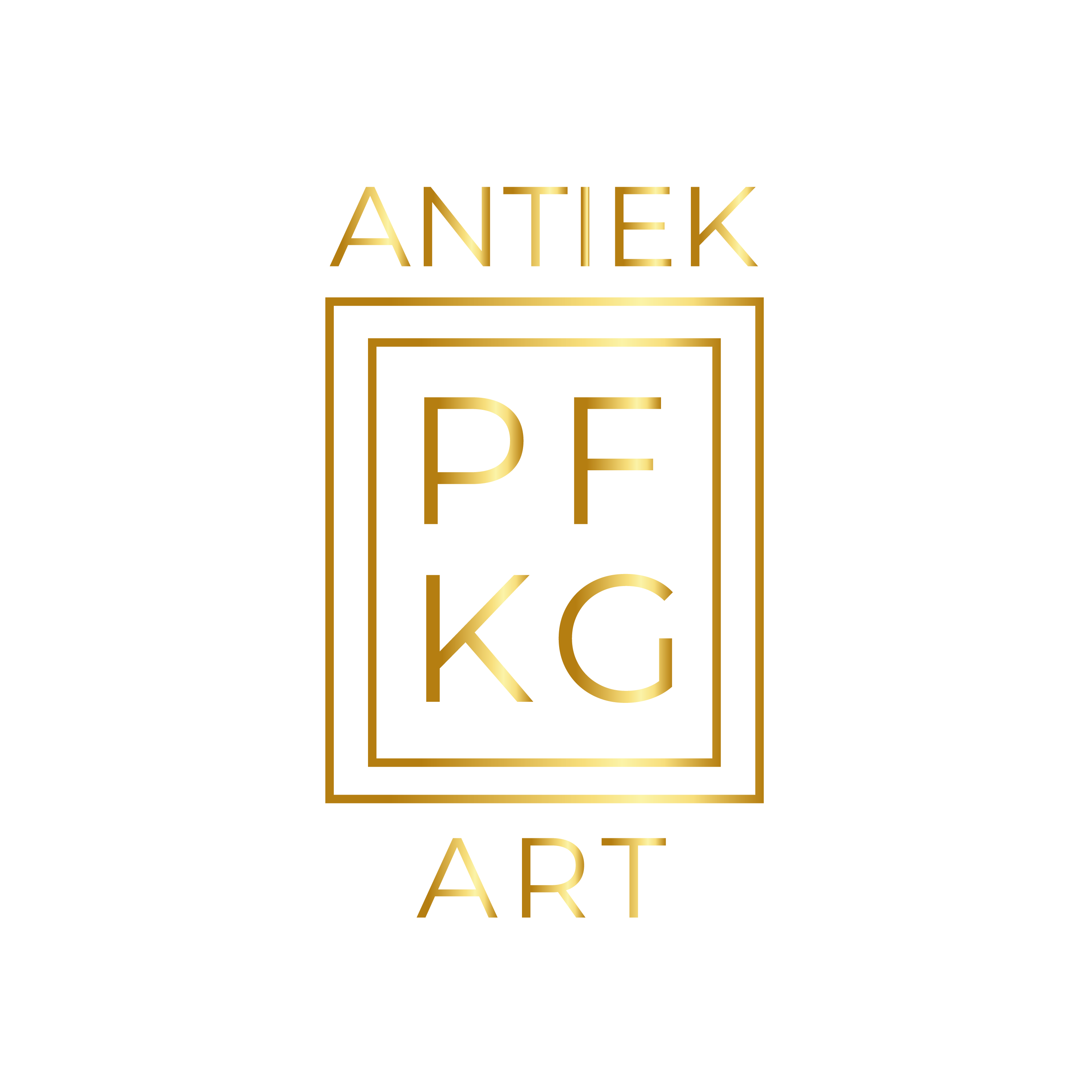
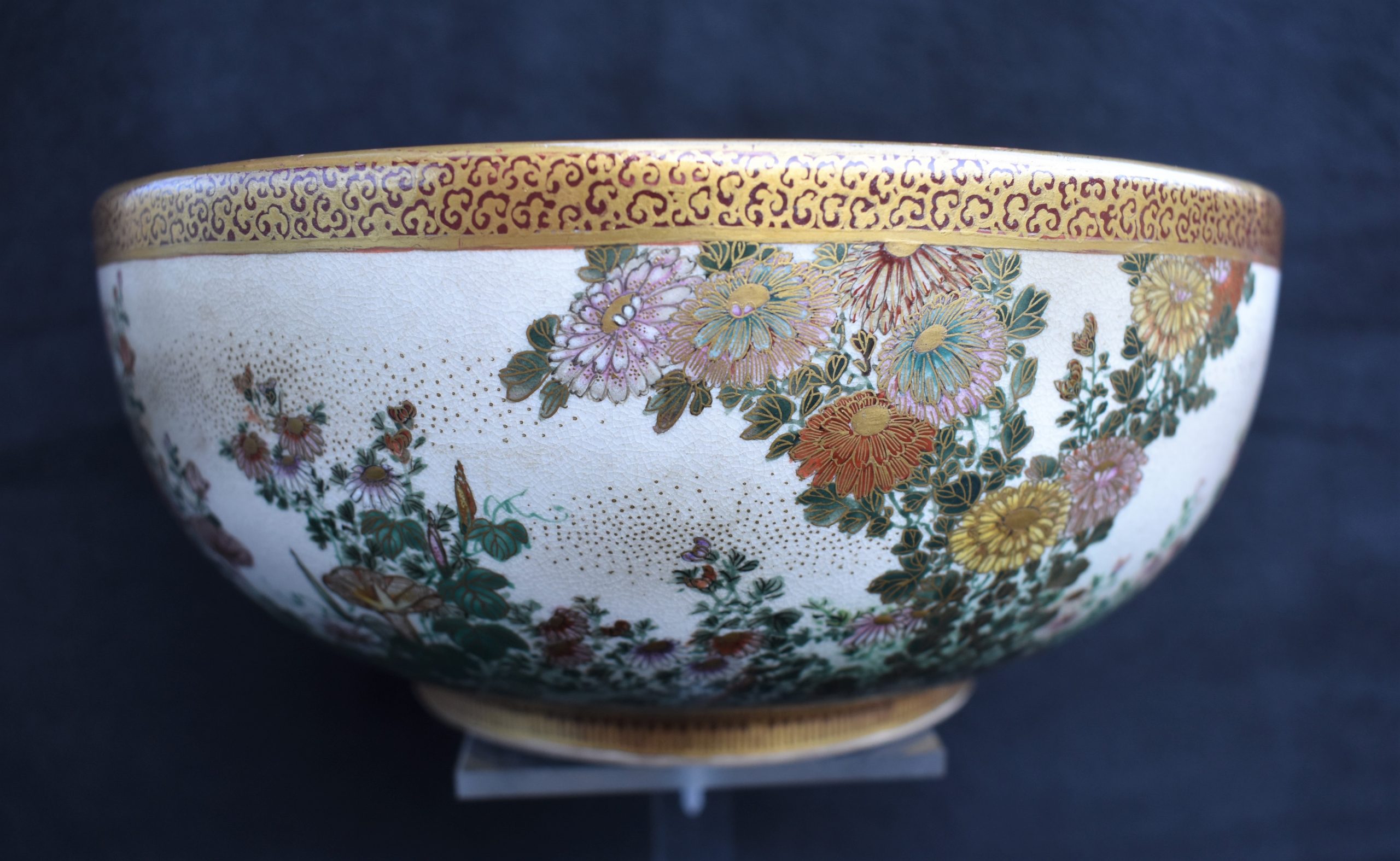

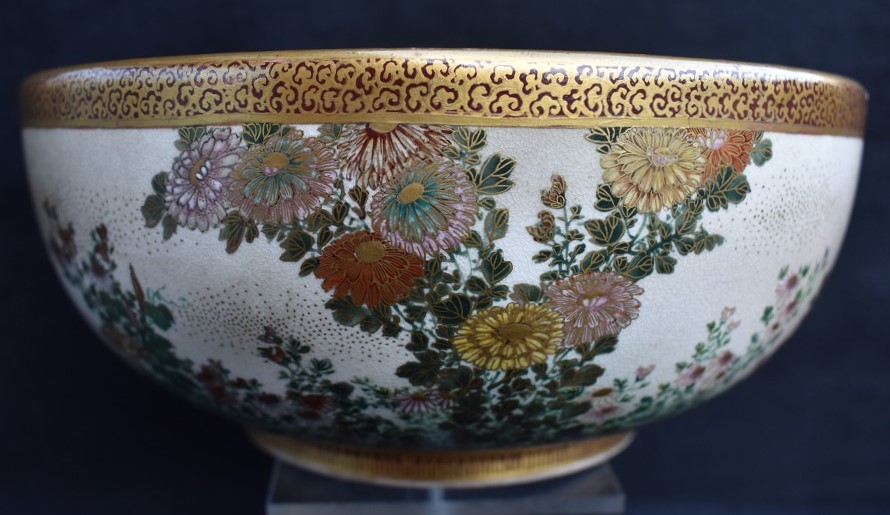

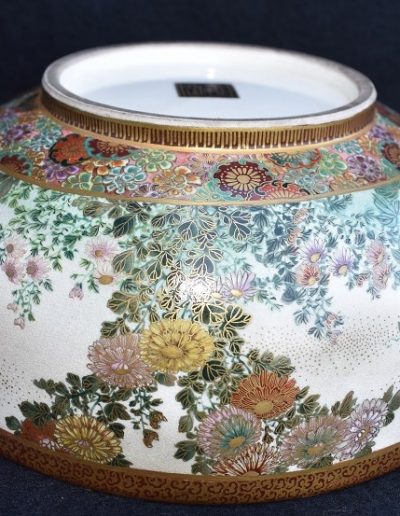

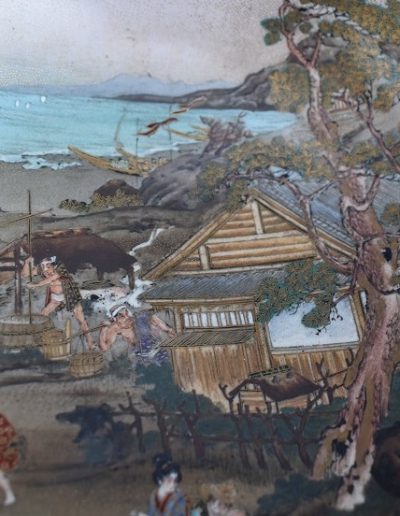
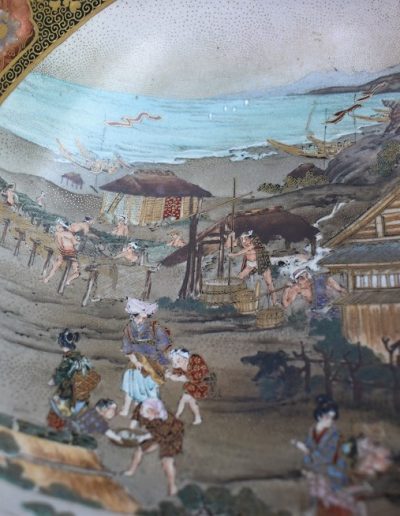
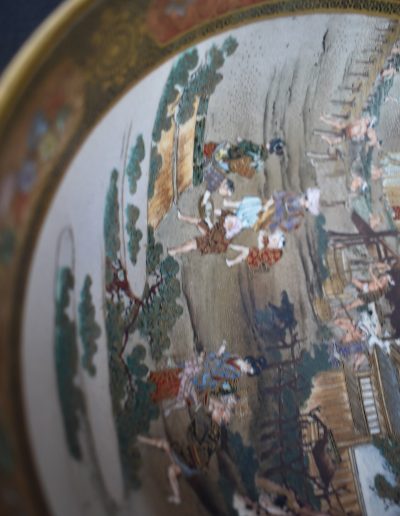
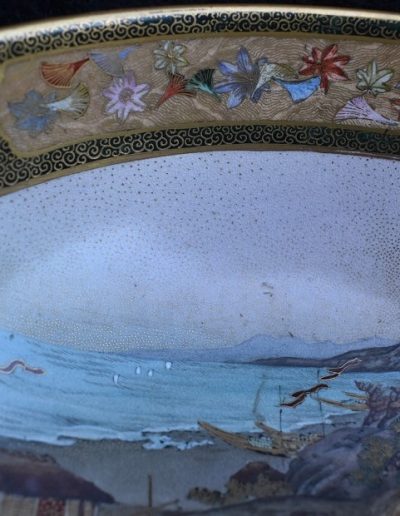
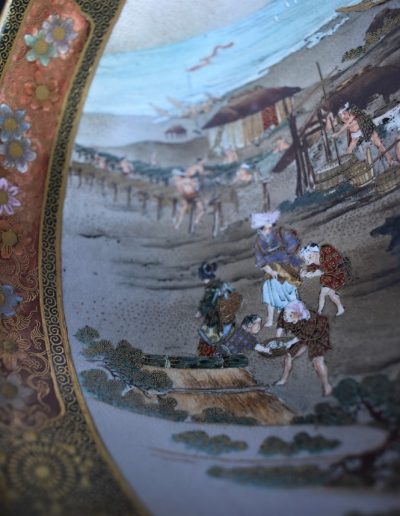
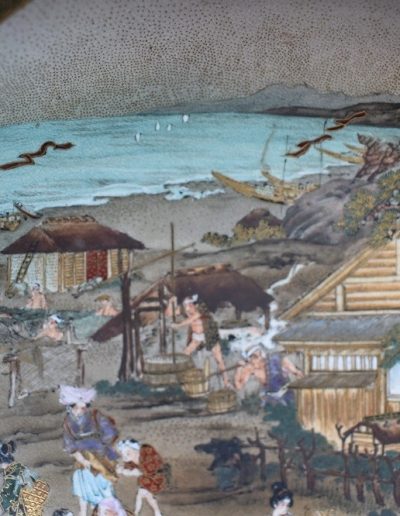

Reviews